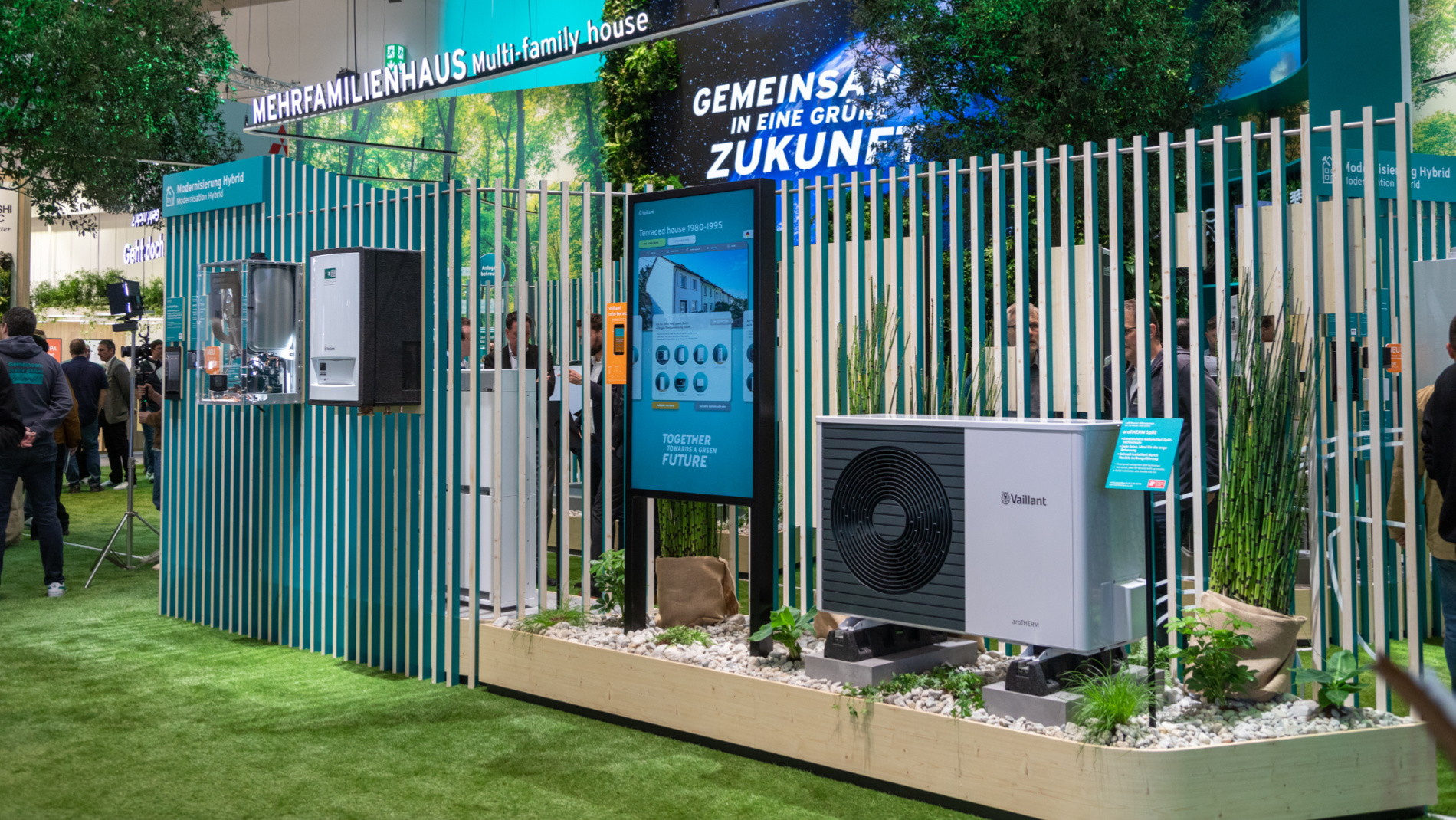The energy transition in the heating sector

Sustainable heating with electricity: electricity-based heating systems are an environmentally friendly and efficient alternative to heating with fossil fuels such as oil or gas. Through the integration of renewable energies, electric heating systems can not only make a significant contribution to reducing CO2 but also help building operators cut their costs in the long term. Together with advanced heat-storage technologies and intelligent energy management, heat pumps, infrared heating and electric underfloor heating are paving the way for an energy-efficient heating revolution.
The ISH trade fair offers a practical overview of the various types of electricity-based heating systems, how they work and how they can help heat buildings in an environmentally friendly way. An overview:
Heat pumps: heat from the air, earth or groundwater
Heat pumps use electricity to extract heat from the environment and transfer it to buildings for heating rooms or hot water. Different types of heat pumps utilise sources of heat from various parts of the environment:
- Air-water heat pumps draw heat energy from outdoor air and come in two types: monobloc heat pumps (heat cycle enclosed in a single unit) and split heat pumps (heat cycle divided between two units).
- Brine-water heat pumps (geothermal heat pumps) use geothermal probes to absorb the heat energy of the earth via a brine solution.
- Water-water heat pumps utilise the heat energy from the groundwater.
The energy mix plays a crucial role in the carbon footprint of heat pumps, of which a record 356,000 units were sold in Germany in 2023, according to the BDH/ZVSHK industry associations. Operating heat pumps with electricity from renewable sources, such as a photovoltaic system or a battery storage system, as well as an intelligent heat pump control system, helps to maximise the sustainability of these heating systems – and can even provide a building with an independent supply of heat.
Infrared heating: efficient heating with electricity
As direct-current heaters, infrared heaters convert electrical energy into heat radiation and emit it evenly into rooms via the heating material. Materials with good thermal-storage properties, such as ceramics, are used for the heating.
When it comes to new installations, infrared heating is cheaper than oil or gas heating. Infrared heating reacts quickly, can be used exactly where it is needed. Moreover, it is particularly suitable for quickly and easily retrofitting previously unheated rooms. Additionally, infrared heating is sustainable when combined with renewable sources of energy. To achieve a demand-based heat supply with solar power, a direct connection to photovoltaic systems and battery storage is ideal. In regions with suitable wind conditions, the addition of small wind turbines can be a sensible option to ensure a supply of green electricity even on days when there is little sunshine.
Electric underfloor heating: an invisible source of heat
In the case of electric underfloor heating, electric current flows through heating cables beneath the floor and generates heat via electrical resistance. Because they are installed under the floor, these efficient heating systems take up no additional space and at the same time ensure a pleasant room climate thanks to even heat distribution.
Electric underfloor heating systems can also be combined with sustainable sources of energy. For example, the electricity generated by the building's photovoltaic system can be used to power the heating cables either directly or via battery storage. At times of low solar radiation, combining the system with wind energy can be a sensible solution. An intelligent load-management system adjusts the temperature to the availability of green electricity, thus maximising the degree of self-sufficiency.
Electricity-based heating systems combine energy efficiency, environmental friendliness and long-term economic efficiency and these innovative heating technologies are set to play an increasingly important role for green buildings as the heating sector continues down the path towards sustainability. Find out more at ISH 2025 and exploit your full potential for sustainable heating.
